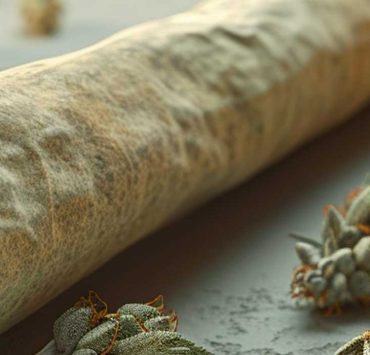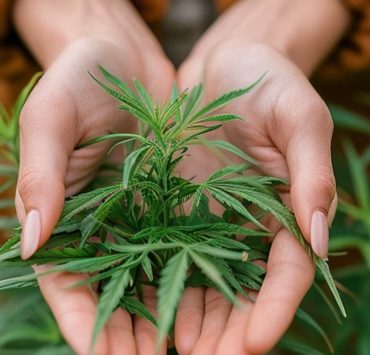Samik has been a literature student all along and uses…
Botrytis or Bud rot is one of the most dangerous fungal infections that your cannabis crop can experince. It has the capability to ruin your crop and turn it into something terrible. But do not worry, as I have brought to you some of the most important factors that can help you deal with bud rot.
What Is Bud Rot?

The Cannabis industry is currently on a growing trajectory. Newer brands are coming into the scene to create something new. However, bud rot is something that can derail this endeavor. It is like a cancer that grows fast and can raze crops to the ground.
Bud Rot or Botrytis is a form of gray mold that the cannabis industry is scared to death. Bud Rot grows in the densest parts of a bud. As a result, you will not be able to witness it before it is too long.
Bud Rot is an adamant fungus to deal with. As a result, it can grow indoor as well as outdoor growing cannabis strains. Therefore, you need this article to understand the phenomena closely and in a more detailed manner.
The First Visual Signs Of Bud Rot
Identifying bud rot is one of the toughest things to deal with. This is because it is not easy to identify in the initial stages of the infection. As a result, you need to keep a close watch and identify these first visual signs of bud rot. Here are some of the most common variations of Bud rot.
- Gray discoloration of stems and leaves.
- Stems becoming mushy and gray
- Wilted, yellowed, and burnt leaves.
- Visual signs of mold
- Fluffy buildup of fungus on the insides of the buds.
- Discolored spots on the leaves
- Dry and curled-up leaves.
- Abnormal leaf growth
- Development of brown and dry calyces.
- Dark or purple discoloration
- Small black spots on the leaves and the stems
- An unnatural musky smell that is not of the cannabis.
Factors Leading To Bud Rot

As per several sources, bud rot is a result of a weakened immune system. As per genetics, bud rot is mostly prevalent in strains with weak immune systems. But veteran growers claim that every strain is susceptible to fungal growth. Especially if the conditions are not right.
One of the biggest driving factors of bud rot is unchecked moisture in the growing station. This moisture gets trapped in the complex structure of the buds and eventually lays down the pathway for a bud rot to grow.
Ventilation is also a huge factor. Bud rot usually sets in when a grow station is not evenly ventilated. This results in the old and skunky air to set in and enable bud rot. Therefore, keep your grow station more ventilated.
Another thing that growers note is that bud rot is especially devastating in outdoor growing stations. In fact, growers around coastal areas claim that bud rot can be especially difficult to manage.
How Quick Can Bud Rot Spread?

I think it is fairly clear that bud rot is not what you want or need in your cannabis-growing operation. It is difficult to identify, but it can be transmitted easily and can become a huge nuisance.
But the real question is, ‘How Quick Can Bud Rot Spread?’ I mean, the answer is not something that you would like. Bud rot or Botrytis is a quick-spreading fungus. The internet is full of stories where the rot spread from one plant to the whole crop in a matter of one or two days.
I do not have a conclusive answer, but experts believe that you have around 72 hours after identifying the first visual signs of bud rot. So get to work immediately.
How To Stop Bud Rot

Regardless of your growing station, you only have a few hours before the rot takes over. Therefore, you need to keep a close watch on the respective strain and have a clear idea about the methods to stop the rot midway.
In this section, I would like to talk about the methods of stopping the rot midway. For better understanding, I have divided the whole section into two distinct sub-sections. First, I will Focus on indoor growing, and then I will shift my focus to outdoor growing operations. So, let us dive right in.
How To Stop Bud Rot Indoor
Studies show that bud rot can be dealt with in multiple ways. Therefore, you will have options when you are choosing the right method to deal with bud rot. One of the simplest methods is to sprinkle crop control solutions. Spray this solution every 72 hours until you see the signs of the rot dissipating.
Excess moisture is often the biggest reason behind bud rot. Therefore, avoid overwatering. Follow a proper watering schedule and follow it to the T. This can help you stop the fungal growth from spreading further and deeper.
Finally, mold buildup aggravates cold and humid temperatures. Therefore, regulate the temperature of your growing station in order to avoid bud rot in any way whatsoever. Use a heated light and moisture controller to deal with the fungal growth.
How To Stop Bud Rot Outdoor
Bud Rot never discriminates between indoor and outdoor growing. Therefore, you can easily experience bud rot in any situation. Dealing with bud rot outdoors is not as different as dealing with it indoors. The cannabis market is currently saturated with chemicals and solutions that help with Bud rot. In fact, some chemical companies like Trifecta and others have come up with their own nanotechnology to deal with bud rot.
One of the biggest problems of outdoor growing operations is that there are several uncontrollable factors like heat, moisture, and rain. Hence, construct a temporary shed for your cannabis plants. Try to safeguard it during the rainy season, as it is one of the biggest driving factors that can lead to bud rot.
If you do see some signs of fungal growth, try to isolate the plant in question from other plants. This will stop the bud rot’s growth in its tracks. Therefore, you need to be very diligent and careful with your plants.
How To Prevent Bud Rot

Before you start rambling about the similarity of this section with the ‘How to Stop Bud Rot,’ let me clear some things up. Stopping over here implies that you are stopping the growth of a fungal infection.
Prevention, on the other hand, implies that you are not letting the infection manifest. Therefore, this is a very important section for people who are still not very experienced with growing their own cannabis.
In this section, I will talk about some of the preventative measures that can help you deal with the fungal infection way before it sets foot on the scene.
How To Prevent Bud Rot Indoor
Similar to stopping, there are several preventative measures that can aid you in stopping the rot before it even starts. One of the first solutions is to sprinkle some pest control and crop control solutions on your harvest. This will aid you to keep the bud rot at bay.
Other than that, you need to buy certain tools like dehumidifiers, air fresheners, temperature control kits, etc. All these tools will help you improve the air circulation of your grow station. Subsequently, you must regularly prune excess buds and flowers. This will help you build a better ecosystem for your cannabis plant or crop.
While pruning, keep an eye out for aberration and discoloration. This will help you isolate and cure your plants off of fungal growth. And regularly sun your plants. Even if it is a part of an indoor growing situation.
How To Prevent Bud Rot Outdoor
Preventing bud rot outdoors is essentially very similar to stopping it. However, prevention requires a little more discipline on the grower’s part. I would suggest you regularly use pest and crop control solutions on your plants. However, do wash your plants with normal tap water as well. Otherwise, there could be a residue development on the buds.
Several growers claim that they often air dry after sprinkling solution or washing their cannabis plants. This keeps excess moisture from sitting and eventually ruining your favorite strain.
Pruning is another very common and trusted method that can aid you in preventing bud rots. Make sure that buds do not touch each other. This enhances airflow and reduces the chance of bud rot growth.
What To Deal With Bud Rot In Harvested Yield
Bud rot might not be the end of the world, but it can certainly function like a wrench in the wheelwork. As a result, growers literally dread this fungal onset. However, it is manageable. All it needs is a little love and care in order to keep the infection at bay.
I personally prefer cutting off the buds that show signs of bud rot. Then, hang it to dry in a spot that has good airflow. Strategical placement of infected buds can really turn around the situation.
Another small, quick fix that can help you with bud rot is microwaving. Throw your buds in the microwave and let it heat up for about a minute on low heat. Remember to keep the heat low so that you do not activate the THCA and turn it into THC.
- Other than that, here are some other quick fixes that can help you deal with:
- Isolate and discard the infected buds.
- Check for signs of the rot around the primary rotting bud. See if any more buds need to be quarantined.
- Trim the buds into smaller sizes to keep them from getting chunky and heavy.
- Use a humidifier to remove excess moisture.
- Sprinkle some antifungal solution on plants.
Recovery Period Of A Plant With Bud Rot

The recovery period of a bud plagued with bud rot is subjective. It primarily depends upon growers and the steps they have taken to solve the issue. If you follow some of the steps I have discussed, then the recovery period could be mere days.
Apart from the fixing method, the recovery period is also dictated by the plant’s ability to combat the infection and the severity of the infection. A plant with higher immunity will be able to combat more serious cases of infection than most other plants.
Hence, you need to keep an open mind and let the process take over. Because you already cannot do much worrying.
Should You Harvest If The Plant Has Bud Rot?

A grower roughly invests 10 weeks and around $1000 dollars in order to grow a strain. Therefore, the primary question most growers might ask is, “Should I harvest a bud with the bud rot?” The answer is nuanced and layered.
It is a yes as well as a no. As a grower, you can take steps to fix the prevalent infection. However, if the rot has taken over the whole of the bud, then the situation might become trickier.
As an ethical cannabis connoisseur, I do not suggest you harvest infected cannabis strains. In fact, you will be doing yourself a favor if you choose to quarantine or destroy a severely infected cannabis plant.
Particles of bud rot stay in the air for a long while. Therefore, it needs to be dealt with promptness.
Should You Smoke It?

As much as it is alluring to smoke up your home-grown cannabis, I suggest that you refrain if it is down with bud rot. Bud rot is a major issue to deal with. However, please spare yourself the misery and do not consume a strain that has a severe case of bud rot. It can turn out to be really bad for your health and leave you in the ER.
The Final Puff
With that, you have reached the very end of my article regarding bud rot. A dangerous fungal infection that can lead your cannabis crop in trouble. Keep following our page for more cannabis-related content, news, and stories.
Additional Reading:
Samik has been a literature student all along and uses his fluidity to write about multi-niche topics. Aspiring to be a professional writer, he tries to analyze his topic from a critical standpoint but still adds a hint of personal perspective to the end product. Being a person having a general inclination toward global politics and documentary filmmaking, he also wishes to write and document more about numerous conflicts that are brewing in the different corners of the globe.









